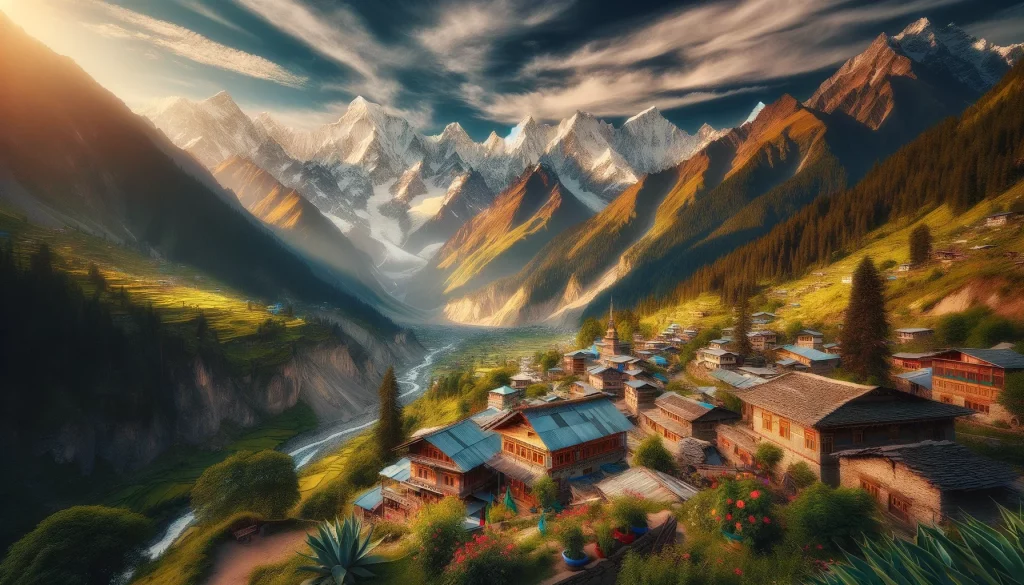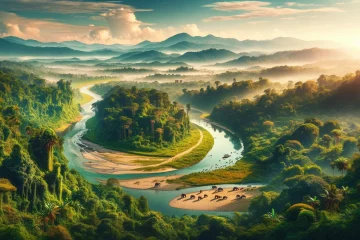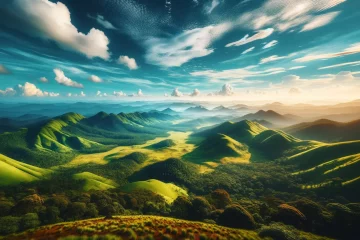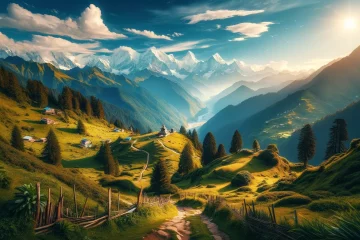Explore Kinnaur: Ideal Seasons & Cultural Insights

Introduction: The Mystical Land of Kinnaur
Namaste, dear readers! Today, let’s embark on a virtual journey to a place that’s not just a destination but a celestial experience – Kinnaur National Park in Himachal Pradesh. Nestled in the lap of the Himalayas, this park is more than just a piece of land; it’s a slice of heaven.
Why Kinnaur, you ask? Oh, it’s not just the breathtaking views or the serene vibes. It’s about feeling connected to something ancient and divine. This region is steeped in mythology – a land where gods are said to reside. For us Indians, it’s not just about the scenery; it’s about the soul of the place.
The Enchanting Beauty of Kinnaur
As you step into Kinnaur, you’re greeted by nature in its most majestic form:
- Majestic Mountains: The Himalayas here aren’t just mountains; they’re guardians of ancient secrets. Each peak tells a story, if only you listen closely.
- Flora and Fauna: The biodiversity is astounding. From exotic birds to elusive snow leopards, Kinnaur is a treasure trove for wildlife enthusiasts.
But here’s the thing – Kinnaur’s beauty isn’t just in its landscapes. It’s in the air, the light, the very essence of the place. It’s a different kind of beauty, raw and unfiltered.
Cultural Significance and Local Legends
Now, let’s delve into the soul of Kinnaur. This land is rich in culture and mythology:
- Local Folklore: Every stone, river, and peak here has a story, often intertwined with Hindu and Buddhist mythology. Like the legend of the Kinnaur Kailash, believed to be the winter abode of Lord Shiva.
- Cultural Richness: The colorful Kinnauri culture, with its vibrant dresses and unique customs, adds a layer of charm to the region.
For us Indians, a place’s cultural heritage is as important as its natural beauty. Kinnaur, with its blend of nature and culture, strikes that perfect chord.
Best Time to Visit: A Seasonal Guide
Choosing when to visit Kinnaur is as important as deciding to visit. Each season here paints the landscape in a different hue:
- Summer (May to June): Ideal for those who enjoy a mild climate. The valleys are alive with blooming flowers, and the sky is a clear blue canvas.
- Monsoon (July to September): Though the rains bring challenges, they also unveil a rejuvenating side of Kinnaur. The greenery is lush, and the rivers are full of life. However, be cautious of landslides!
In my opinion, the post-monsoon period is a hidden gem. The retreating rains leave behind a landscape that’s fresh and vibrant. It’s a photographer’s paradise!
What to Expect Each Season
Kinnaur’s charm varies with the seasons:
- Peak Season (May to June): Expect pleasant weather, perfect for trekking and exploring. But, it’s also the busiest time, so book accommodations in advance.
- Off-Peak Season (Winter): For the brave hearts! The snow-covered landscape is mesmerizing. It’s quiet, serene, and offers a completely different experience.
- Transitional Seasons (Spring and Autumn): My personal favorites. These seasons are less crowded and showcase Kinnaur in transition – either waking up from winter’s slumber or preparing for it.
Each season brings its own adventures. As one of my readers, Raj, commented, “Kinnaur in spring feels like walking in a painting!” I couldn’t agree more, Raj!
Planning Your Journey
Now, let’s talk about turning your dream trip into reality:
- Travel Routes: If you’re coming from Delhi or Chandigarh, the drive itself is part of the adventure. The roads weave through some of the most stunning landscapes.
- Stay Options: From homestays to luxury resorts, Kinnaur offers a range of accommodations. I’ve experienced both and can say that the warmth of Kinnauri hospitality is constant.
- Local Insights: Engage with local tour guides. Not only do they provide valuable information, but they also share stories that make your journey more meaningful.
Remember, Kinnaur is not just a place to visit; it’s an experience to be lived. Whether you’re seeking adventure, tranquility, or a bit of both, planning well can make all the difference.
Experiencing Local Life
Immersing yourself in the local culture of Kinnaur is an experience in itself. Here’s how you can embrace the local way of life:
- Meet the Locals: The people of Kinnaur are as warm as their vibrant culture. Spend a day with a local family, and you’ll hear tales that no guidebook can tell.
- Savor the Cuisine: Kinnauri dishes are a delightful blend of Tibetan and Indian flavors. Don’t miss trying the ‘Thukpa’ and ‘Momos’. As Priya, a reader from Mumbai, shared, “The food in Kinnaur is a revelation!”
- Local Festivals: Time your visit with local festivals like Phulaich or Losar to witness Kinnaur in its most colorful and vibrant form.
Engaging with the local community not only enriches your travel experience but also supports sustainable tourism.
Adventure and Activities in Kinnaur
For the adventure seekers, Kinnaur is a playground waiting to be explored:
- Trekking: Trails in Kinnaur range from easy to challenging, offering something for every level of trekker. The Kinner Kailash Circuit is a must-try for the seasoned hikers.
- Wildlife Spotting: The park is home to diverse wildlife. Keep your eyes peeled for the elusive Himalayan ibex or the vibrant pheasants.
- Cultural Exploration: Visit ancient monasteries like the Riba and Morang, which are not just places of worship but also repositories of rich history.
Remember to respect the natural environment and local customs during your adventures.
Travel Tips for Indian Tourists
For my fellow Indian travellers, here are some tailored tips:
- Language Connect: A few words in the local dialect can go a long way in connecting with residents. Hindi is widely understood, but learning phrases in Kinnauri can be fun and respectful.
- Family Travel: Kinnaur is great for family trips. The diverse experiences it offers can cater to the interests of all age groups.
- Budgeting: Plan your budget keeping in mind the off-beat location. While some areas might be inexpensive, others, especially remote regions, might cost more due to accessibility challenges.
Conservation and Respect for Nature
As we revel in the beauty of Kinnaur, let’s not forget our responsibility towards preserving it:
- Eco-Friendly Practices: Opt for eco-friendly travel options and accommodations. Minimize plastic use and dispose of waste responsibly.
- Supporting Conservation Efforts: Participate in or contribute to local conservation initiatives. Your contribution, however small, makes a difference.
- Responsible Photography: While capturing memories, ensure that you do not disturb the wildlife or local communities.
Conclusion: Embracing Kinnaur’s Splendor
As we conclude this virtual journey, I’m reminded of a sunset I witnessed on the banks of the Baspa River – a moment of pure tranquility. Kinnaur is not just a travel destination; it’s a reminder of the harmonious coexistence of humans and nature.
I invite you, my dear readers, to share your thoughts and experiences. Have you visited Kinnaur? What are your expectations for such a journey? Let’s keep the conversation going and build a community of travelers who cherish and respect the natural wonders of our incredible India.



0 Comments